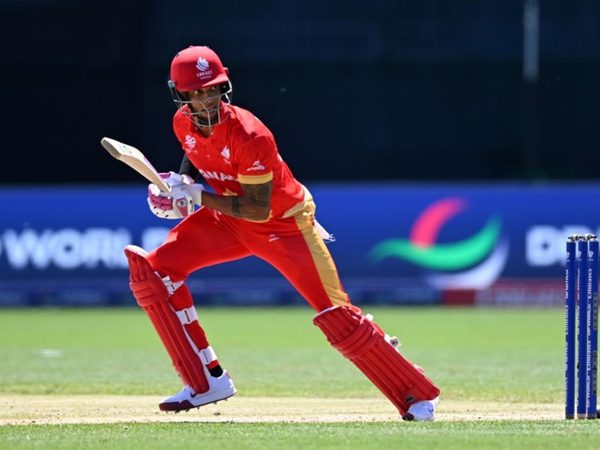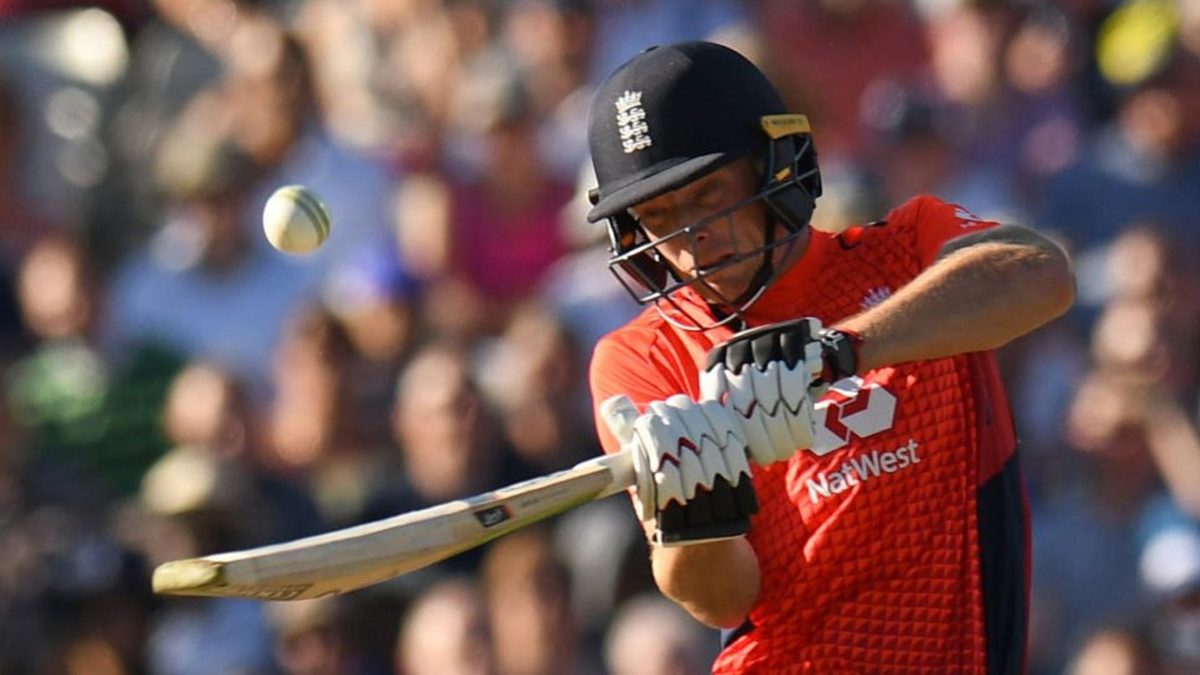
Patrick Noone of CricViz analyses the T20 form of England and India ahead of their three-match series.
CricViz are cricket intelligence specialists
Death-over batting
Since the 2016 World T20, England’s batting in the death overs has been one of their weaknesses in the shortest format. Only Bangladesh have recorded a lower run-rate in overs 16-20 in that period while England are ranked bottom in terms of boundary percentage and have one of the highest dot-ball percentages during the latter phase of the innings.
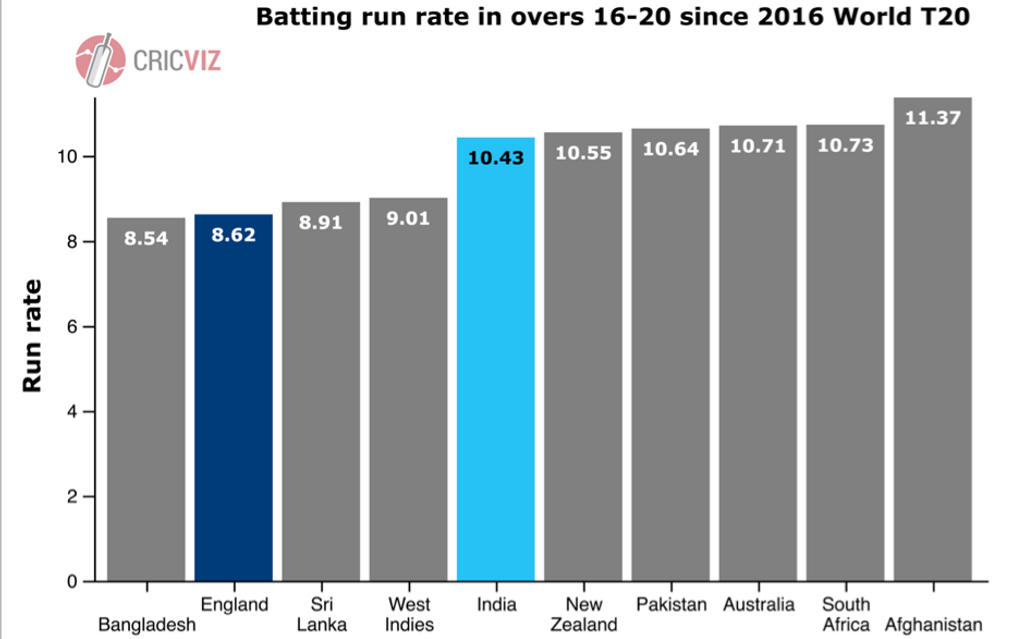
Conversely, although India’s run-rate at the death is only middling when compared to other sides, they have least recorded the lowest dot-ball percentage of any team and their boundary percentage is bettered only by Pakistan, South Africa and Afghanistan.
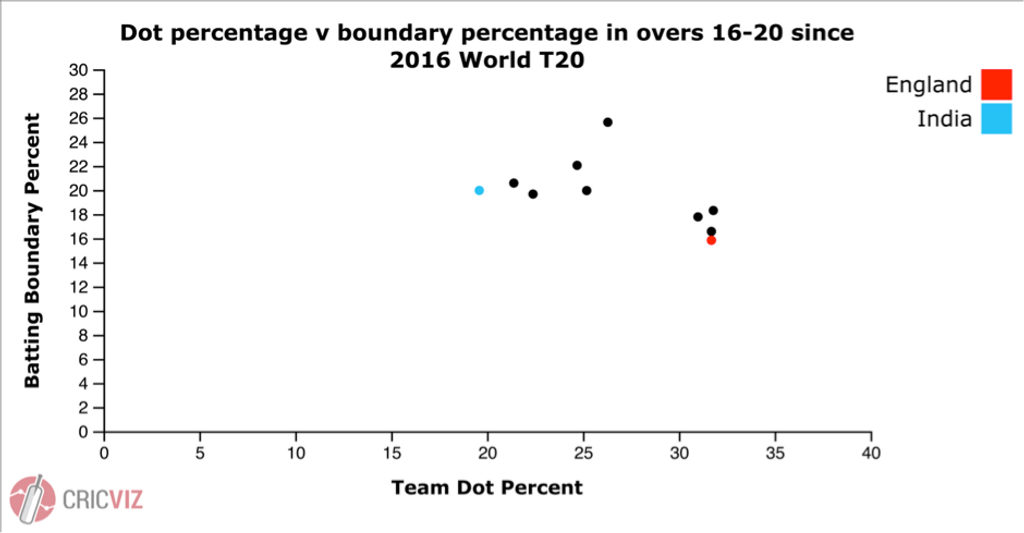
These numbers are something of surprise for England, particularly because they possess Eoin Morgan in their batting line-up, the batsman with the highest death-over strike-rate of batsmen to have faced 200 balls at that stage (182.60) and, since the World T20, that figure has actually increased to 190.32. Jos Buttler is seventh in that list with 174.70, but his presence at the back end of the innings is likely to be limited with his move to the top of the order.
England’s problem has been losing too many wickets at the death, causing their progress to slow. They have lost 40 wickets in the death overs since the 2016 World T20, giving them a team batting average of just 12.22, the lowest of any team in that period. It is evidently an area that Morgan’s men can improve upon and it will be fascinating to see if they are able to in the upcoming series.
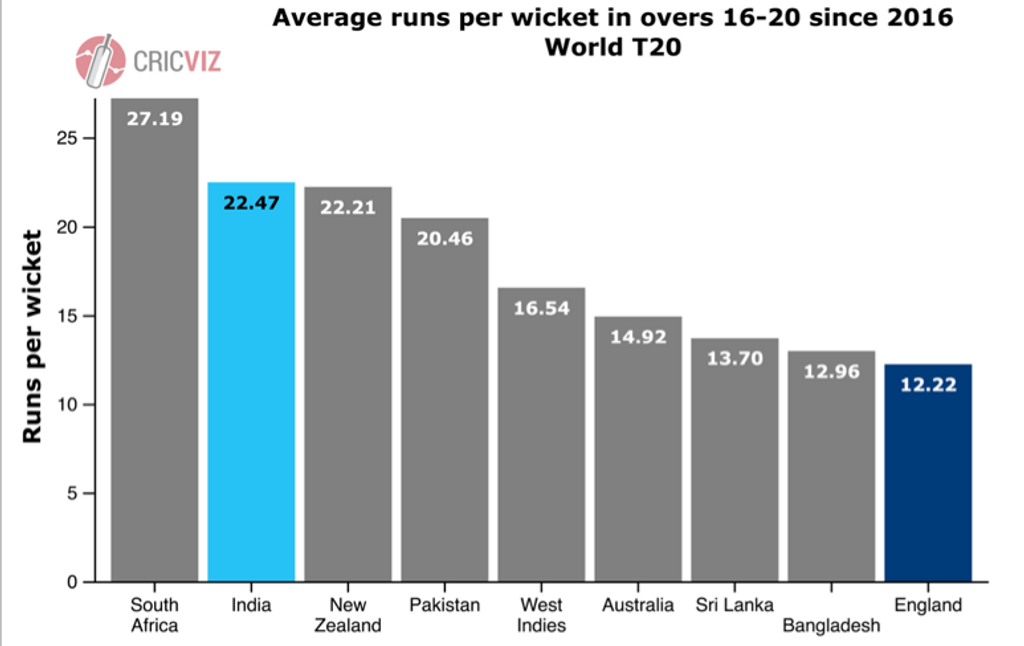
Powerplay bowling
There is another stark contrast between the two sides’ new-ball bowling. Since the 2016 World T20, England have the highest economy rate in the Powerplay overs, while India have been more miserly than everyone, besides Pakistan. In Bhuvneshwar Kumar and Jasprit Bumrah, India possess the two most economical Powerplay seamers in that period (6.31rpo and 7.19rpo, respectively), making their match-up with England’s big-hitting top order an intriguing one.
Key player – Virat Kohli
The India captain is, of course, the undisputed star of his side and his numbers against all bowling types in this format indicate how dangerous he can be. However, his run-rate against off-spin suggests that he can be tied down, relatively speaking, by that type of bowling.
| Virat Kohli run-rate in T20Is | |
| Bowling Type | Runs per over |
| Left-arm unorthodox | 9.52 |
| Right-arm seam | 8.71 |
| Leg-spin | 8.64 |
| Left-arm seam | 7.58 |
| Off-spin | 7.49 |
| Left-arm orthodox | 7.16 |
England’s Moeen Ali was impressive in the recent limited-overs series against Australia, picking up 13 wickets at an average of 20.38 and an economy of 5.93 across the six matches (five ODIs, one T20I). He is one of four off-spinners to dismiss Kohli in T20Is and has taken his wicket three more times across all formats (twice in Tests, once in ODIs). The manner in which Kohli plays England’s off-spinner could go a long way to deciding which way the T20 series goes.
Key Player – Jos Buttler
Since the last World T20, India’s seamers have bowled 25% of all their deliveries on a good line and length, a higher percentage than every team, besides New Zealand (26%). That could be a dangerous tactic against Jos Buttler, especially now he has been moved to the top of the order and will be batting in the Powerplay, where India’s good line and length percentage is up at 29%.
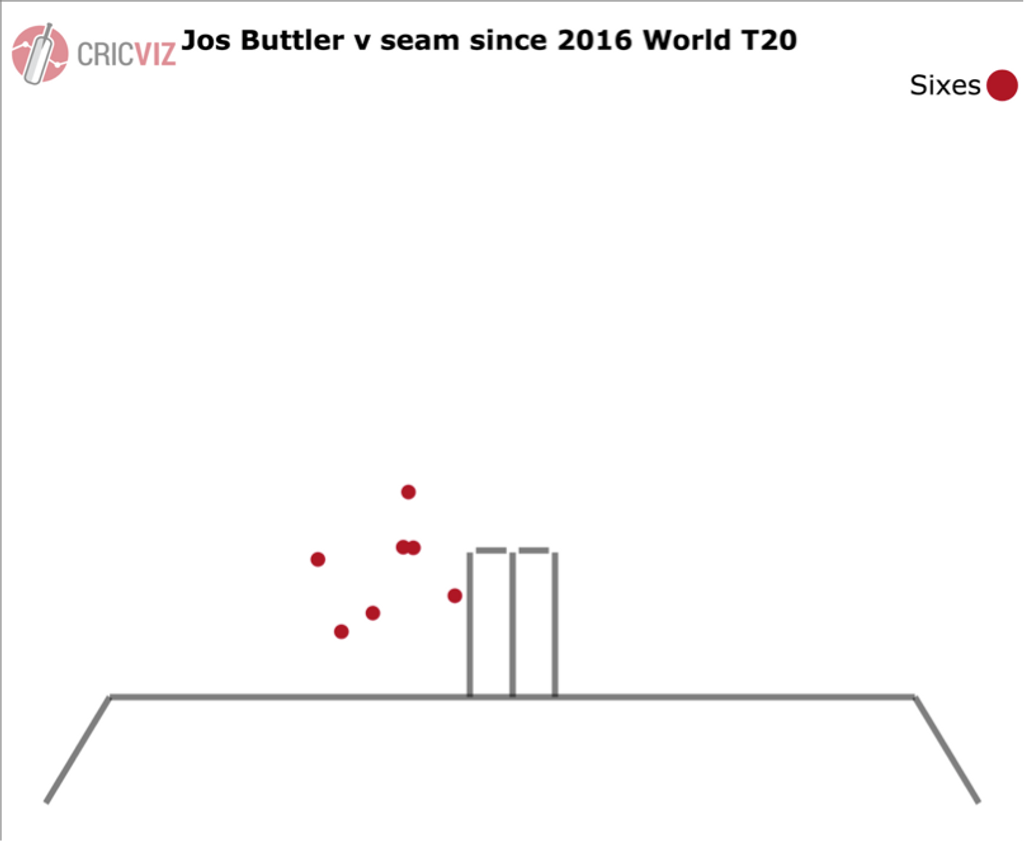
As the graphic shows, all of Buttler’s sixes since the 2016 World T20 have come from balls in the fourth-stump channel and six of those seven sixes have come from deliveries pitching between 3.5 and 8 metres from his stumps. Buttler scores at 8.68 runs per over against balls on that length and has only been dismissed twice in that time. His potency against that kind of bowling could well force India into a rethink how they bowl to Buttler, particularly in the early part of the innings.
Series fixtures:
Tuesday July 3, Emirates Old Trafford
Friday July 6, Sophia Gardens Cardiff
Sunday July 8, Brightside Ground, Bristol

